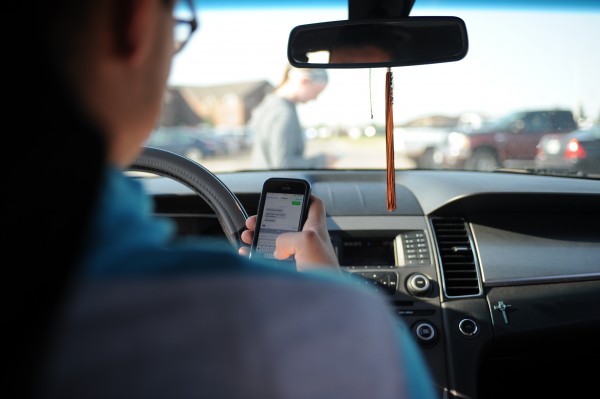Texting While Driving Can Have Devastating Results


A driver that has perhaps gone for an extended period of time without having an accident might find it easy to fall into complacency with their driving. After all, they’ve driven a particular route to their home or job hundreds of times, all without incident. It is in this mind state that people decide that they can’t wait until they get home to answer that e-mail, or download that picture message they just received from a friend. In that moment, their focus on the task at hand is lost, and they open themselves up for disaster to strike.
It’s difficult to overestimate the reaction times that are needed to avoid accidents while driving, and the frequency with which they are needed would probably alarm some people. In city driving, during times of heavy traffic, merely a second can make the difference in a trip to the hospital with an insurance claim having to be filed, or making it home without a scratch.
In much the same way that drunk driving can impair a driver’s natural reaction time, texting while driving creates an unnecessary distraction that results in the same latency between seeing a danger in the road, and being able to bring your vehicle to a stop. Even if you’re not actually inebriated by texting while driving, the results often end up being the same.
People don’t tend to think of texting while driving to be an offense of the same magnitude as drunk driving, but the statistics show it to be nearly as dangerous. Drunk driving accounts for roughly 11,000 deaths per year, according to the Center for Disease Control. This is equivalent to roughly 30 percent of all driving-related deaths. Traffic monitoring reports that drunk drivers are more prone to spend dangerous amounts of time outside of their traffic lane, which is one of the main causes of collision.
Deaths that are attributed to people interacting with a phone while driving are a growing trend, but the last time the statistic was measured, it was at roughly 6,000 per year. This is entirely unacceptable for something that’s as easy to prevent as simply waiting until you’re at your destination to respond to a text, and it’s no wonder why law enforcement officials are beginning to frown strongly upon drivers that they see using phones in their cars.
During the time that the average driver is interacting with their phone, they reported spend an average of 10 percent of their driving time wandering outside of their traffic lane, which poses an immediate danger to others. In fact, it has been noted by other motorists that are following behind someone that’s driving while texting that they seem to be exhibiting a lot of the same apparent signs of a drunk driver.
There are incredibly few situations that warrant an immediate response to a received message when it comes at the cost of compromising your safety, and the safety of those driving near you. If you’re driving with a passenger, have them answer the phone for you instead. Otherwise, it’s simply a wiser choice to wait until you’re at a stop. If a call or text that’s coming in really is that crucial, pull over and then respond.
Christopher Steven is an avid blogger who is passionate about encouraging safety and and healthy practices in his own community. Christopher works with the Gorospe & Smith Personal Injury Law Firm in Tulsa, OK helping families through difficult situations.
